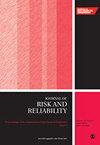级联故障的关键基础设施脆弱性评估:在配水网络中的应用
IF 1.7
4区 工程技术
Q3 ENGINEERING, INDUSTRIAL
Proceedings of the Institution of Mechanical Engineers Part O-Journal of Risk and Reliability
Pub Date : 2023-08-03
DOI:10.1177/1748006x231187448
引用次数: 0
摘要
关键基础设施是任何国家的支柱,这些基础设施的故障可能导致经济中断和致命后果。评估这些关键基础设施的脆弱性现在已经发展成为世界各地研究人员的必要和势在必行的任务。配水网络是现代社会必不可少的一类重要基础设施。这些网络的不间断运作对确保一个国家的经济发展和社会福利至关重要。本文的目的是评估考虑级联故障的配水网络节点的脆弱性。在模拟过程中考虑了水网的系统动力学,以估计级联故障的影响。本文阐述了基于拓扑连通性和供应能力损失的漏洞度量。通过一个网络案例研究,证明了该方法的适用性和意义。通过采用k-均值聚类对提出的脆弱性评估指标和现有的脆弱性评估指标进行系统比较,确定不同的脆弱性区域。本文章由计算机程序翻译,如有差异,请以英文原文为准。
Vulnerability assessment of critical infrastructures for cascading failures: An application to water distribution networks
Critical infrastructures form the backbone of any nation, and the failures of these infrastructures could lead to economic disruptions and fatal consequences. Assessing the vulnerability of such critical infrastructures has now evolved into a necessary and imperative task for researchers around the world. Water distribution networks form an essential class of critical infrastructures of modern society. The uninterrupted functioning of such networks is crucial for ensuring a nation’s economic development and welfare of society. The objective of this article is to evaluate the vulnerability of nodes for Water Distribution Networks considering cascading failures. The system dynamics of a water network are included in the simulation process to estimate the impacts of cascading failures. Vulnerability metrics based on loss of topological connectivity and supply capability are formulated in this article. The applicability and significance of the proposed methodology are demonstrated using a sample network case study. Identification of different vulnerability zones is done by employing k-means clustering to perform a methodical comparison between the proposed and existing metrics of vulnerability assessment.
求助全文
通过发布文献求助,成功后即可免费获取论文全文。
去求助
来源期刊

Proceedings of the Institution of Mechanical Engineers Part O-Journal of Risk and Reliability
ENGINEERING, MULTIDISCIPLINARY-ENGINEERING, INDUSTRIAL
CiteScore
4.50
自引率
19.00%
发文量
81
审稿时长
6-12 weeks
期刊介绍:
The Journal of Risk and Reliability is for researchers and practitioners who are involved in the field of risk analysis and reliability engineering. The remit of the Journal covers concepts, theories, principles, approaches, methods and models for the proper understanding, assessment, characterisation and management of the risk and reliability of engineering systems. The journal welcomes papers which are based on mathematical and probabilistic analysis, simulation and/or optimisation, as well as works highlighting conceptual and managerial issues. Papers that provide perspectives on current practices and methods, and how to improve these, are also welcome
 求助内容:
求助内容: 应助结果提醒方式:
应助结果提醒方式:


